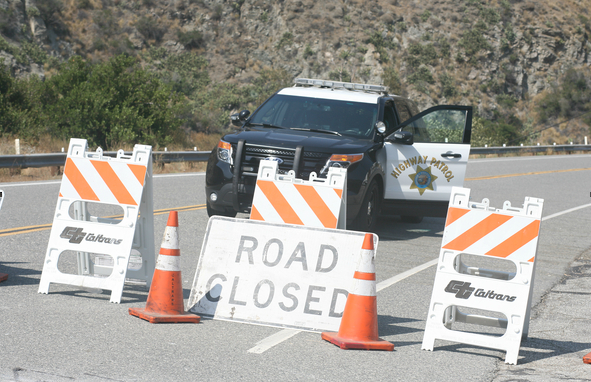2017ńÍŅľ—–°∂”Ę’Z∂Ģ°∑ťÜ◊xņŪĹ‚őń’¬‘≠őń
°°°°‘ī”ŕThe Christian Science MonitorJuly 1, 2016
°°°°http://www.csmonitor.com/USA/2016/0701/As-wildfires-challenge-California-the-causes-go-beyond-climate
°°°°As wildfires challenge California, the causes go beyond climate
°°°°A shift in thought
°°°°Wildfire season has become longer and more intense lately. But beyond addressing climate change, some researchers call for a paradigm shift to address the various human factors relating to prevention and safety.
°°°°By Jessica Mendoza, Staff writer July 1, 2016

°°°°Azusa, Calif. °™ On a chain-link fence along Route 39 hangs a homemade poster, peppered with hearts, thanking firefighters and police.
°°°°The sign, one of a handful scattered across town, salutes efforts to battle the San Gabriel Complex fire, twin blazes that had erupted on June 20 in the mountains of Angeles National Forest just to the north of the city. Within a day of igniting, the fire had burned through nearly 5,000 acres and forced hundreds to evacuate.
°°°°Nearly a week passed before the US Forest Service and local and state authorities managed to contain even half of the inferno.
°°°°Recommended: Could you be a Hotshot? Take our quiz!
°°°°°įThree days in, you could still see the flames,°Ī says Jasmine Perez, a teacher°Įs assistant and resident of Azusa, which sits northeast of Los Angeles. And because of the smoke, she adds, °įIn the mornings, it kind of looked like nighttime still.°Ī
°°°°The San Gabriel Complex was one of 12 large fires that about 4,000 firefighters were battling across California as of Thursday. Such numbers so early in the fire season are a testament to the growing frequency and intensity of wildfires in the western US, fire officials say ®C a shift that many experts say is likely intertwined with climate change and its associated consequences, such as drought.
°°°°But climate, however critical, is only part of the problem, scientists say. A growing body of evidence suggests that other human activity and policy have at least as much impact on wildfires as climate change. To effectively address a longer and more intense wildfire season ®C and ensure the safety of residents in fire-prone areas ®C both environmental and human factors have to be taken into account in more holistic ways, they say.
°°°°That means more than just sweeping dry brush off the front porch. Though such steps are an important part of the process, officials and researchers alike are calling for a comprehensive approach to wildfires: one that incorporates fire safety and behavior in key policy decisions and legislation. Such an effort would also recognize that fire can be helpful as well as harmful and embrace fire°Įs place in human society.
°°°°°įWe need not just a policy shift but also a cultural shift in the dialogue around fires in our landscape and how to manage them,°Ī says Jennifer Balch, director of Earth Lab and a professor of geography at the University of Colorado in Boulder. °įFire is not something we can remove. A large majority of the country is living in fire-prone areas. How do we live with wildfire? How do we manage?°Ī
°°°°°įMore and more researchers are arguing that anthropogenic influences are really important [to understanding wildfires],°Ī adds Max Moritz, a specialist in fire ecology and management and a professor at the College of Natural Resources at the University of California, Berkeley. °įBy leaving them out we°Įre missing a critical piece of the solution.°Ī





Ņľ—–»fÓ}éž°ĺ ÷ôCÓ}éžŌ¬›d°Ņō≠őĘ–Ňň—ňų"Ņľ‘áį…Ņľ—–"
°°°°ŌŗÍPÕ∆ň]£ļ
°°°°2017ńÍŅľ—–īūįł °ý 2017ńÍŅľ—–’śÓ} °ý Ņľ—–Ó}éžĻņ∑÷°ĺ ÷ôCÓ}éžŌ¬›d°Ņ
°°°°2017Ņľ—–’Ģ÷őīūįł °ý 2017Ņľ—–”Ę’Zīūįł °ý 2017Ņľ—–ĒĶ(sh®ī)ĆWīūįł °ý ÍP◊ĘőĘ–Ňƶīūįł![]()
°°°°2017Ņľ—–’śÓ}īūįł÷Ī≤•Ĺ‚őŲ °ý ŁcďŰÓAľs÷ūÓ}Ĺ‚őŲ
°°°°2017ńÍŅľ—–≥…ŅÉ≤ť‘Éērťg °ý ≤ť∑÷√‚ŔMŐŠ–— °ý Ņľ—–ŹÕ‘á∑÷ĒĶ(sh®ī)ĺÄ
°§»fÓ}éž:2021Ņľ—–ĒĶ(sh®ī)ĆW∂Ģ‘ŕĺÄĻņ∑÷“—…ŌĺÄ ŁcďŰŌ¬›d (2020-12-29 10:09:49)
°§Ō¬›d£ļ2021ńÍŅľ—–°∂ĒĶ(sh®ī)ĆW“Ľ°∑’śÓ}ľįīūįłĹ‚őŲ (2020-12-29 10:09:42)
°§Ō¬›d£ļ2021ńÍŅľ—–°∂ĒĶ(sh®ī)ĆW∂Ģ°∑’śÓ}ľįīūįłĹ‚őŲ (2020-12-29 10:09:33)
°§»fÓ}éž:2021Ņľ—–ĒĶ(sh®ī)ĆW“Ľ‘ŕĺÄĻņ∑÷“—…ŌĺÄ ŁcďŰŌ¬›d (2020-12-28)
°§»fÓ}éž:2021Ņľ—–ĒĶ(sh®ī)ĆW“Ľ‘ŕĺÄĻņ∑÷“—…ŌĺÄ ŁcďŰŌ¬›d (2020-12-28 20:14:46)
°§√‚ŔM’śÓ} °§ń£Ņľ‘áÓ}


- 1
- 2
- 3
- 4
- 5
- 6
- 7
- 8
- 9
- 10
- 1
- 2
- 3
- 4
- 5
- 6
- 7
- 8
- 9
- 10

- Őō…ęôŕńŅ
- Ņľ‘á”√ēÝ
- Ņľ—–’{(di®§o)Ą©
- ĹĽŃųĽ•Ą”
Ćć”√őńôn | »ŽŁhŔYŃŌ | »ŽŁh…Í’ąēÝ | »ŽŁh÷ĺ‘łēÝ | āÄ»ň◊‘āų | řD’ż…Í’ąēÝ | ňľŌŽ?y®≤n)Rąů | āÄ»ňļÜöv | ļÜövń£įŚ | ļÜöv∑‚√ś | Ļ§◊ų”čĄĚ | Ļ§◊ųŅāĹY | ◊‘ő“‘uúy
āÄ–‘‘uúy | …ÁĹĽ‘uúy | ¬ėI(y®®)‘uúy | Ŗ\Ą›‘uúy | ąůłś | ĆćŃēąůłś | Ļ§◊ųŅāĹY | …ÁēĢĆćŘ` | –ńĶ√ůwēĢ | Ų¬öąůłś | ’{(di®§o)≤ťąůłś | řo¬öąůłś
∑®¬…őńēÝ | ļŌÕ¨∑∂Īĺ | —›÷v∑∂őń | łŁ∂ŗ>>
”Ę’ZĆWŃē | ¬†Ń¶Ņŕ’Z | ťÜ◊xĆĎ◊ų | ∑≠◊gőńĽĮ | »§ő∂”Ę’Z | ĆWŃē∑Ĺ∑® | ”ĘőńĹõ(j®©ng)ĶšłŤ«ķ | √Ņ»’’nŐ√ | Ņ’÷–”Ę’Z | …ŔÉļ”Ę’Z | ”į“ē”Ę’Z | ”ĘőńłŤ«ķ | łŁ∂ŗ>>
◊ųőńīů»ę | ◊ųőń | –°ĆW | ≥ű÷– | łŖ÷– | ‘íÓ}◊ųőń | Ņľ—– | ňńŃýľČ »§ő∂◊ųőń | ůw≤√◊ųőń | ”õĒĘőń | ◊h’ďőń ’f√ųőń | Ď™”√őń | ◊xļůł– | ◊ųőńňō≤ń | √Ż—‘ĺĮĺš
Éě(y®≠u)√ņ∂ő¬š | ’‹ņŪĻ ¬ | ‘ä‘~ŔpőŲ | ≥…’Z÷™◊R | ľľ«… | ĆĎ◊ų÷łĆß | ◊ųőńŁc‘u | ľ—őńŔpőŲ | ĆĎ◊ųĽýĶA | ‘íÓ}—›ĺö | ◊ųőńĹŐĆW | łŁ∂ŗ>>


